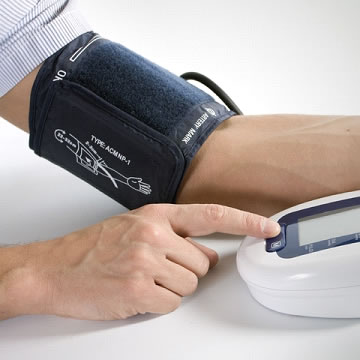 How to Choose a Home Blood Pressure MonitorWATCH SEGMENT ON KFOR-TV  It’s an alarming statistic, but one in three American adults have high blood pressure today, including about 70 percent of seniors 65 and older. This condition multiplies your risk of heart attack, stroke, and premature death. Ease of use: Be sure the display on the monitor is easy to read and understand, and that the buttons are big enough. The directions for applying the cuff and operating the monitor should be clear. Extra features: Many monitors come with additional features such as irregular heartbeat detection that checks for arrhythmias and other abnormalities; a risk category indicator that tells you whether your blood pressure is in the high range; a data-averaging function that allows you to take multiple readings and get an overall average; multiple user memory that allows two or more users to save previous readings; and computer connections so you can download the data to your computer. Portability: If you plan to take your monitor with you while traveling, look for one with a carrying case. WHERE TO SHOP The price will typically range anywhere from $30 to $120 or more. Unfortunately, original Medicare does not pay for home blood pressure monitors unless you’re receiving dialysis at home. But if you have a Medicare Advantage plan or a private health insurance policy it’s worth checking into, because some plans may provide coverage. One of the best arm monitors as recently recommended by Consumer Reports include the Omron 10 Series BP786, and the top recommended wrist monitor is the Omron 7 Series BP652. After you buy a monitor, it’s a good idea to take it to your doctor’s office so they can check its accuracy and teach you the proper techniques of how and when to use it. For more information on how to measure your blood pressure accurately at home, see the American Heart Association Blood Pressure Monitoring tutorial page at homeBPmonitoring.org. |




